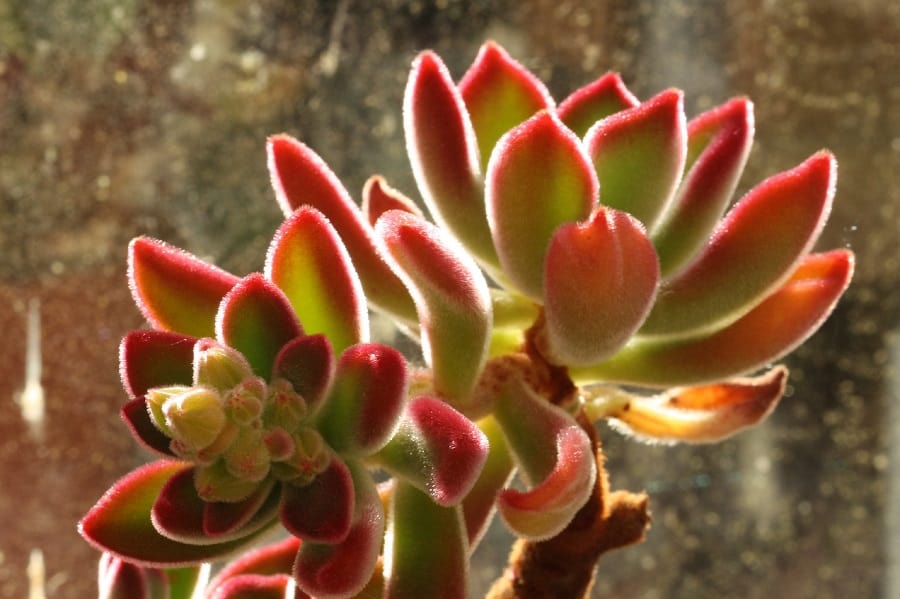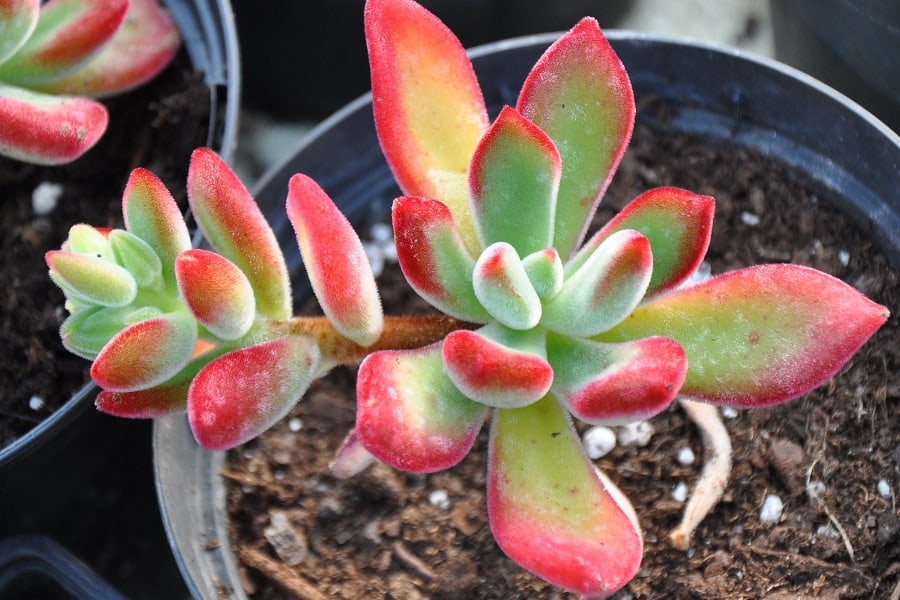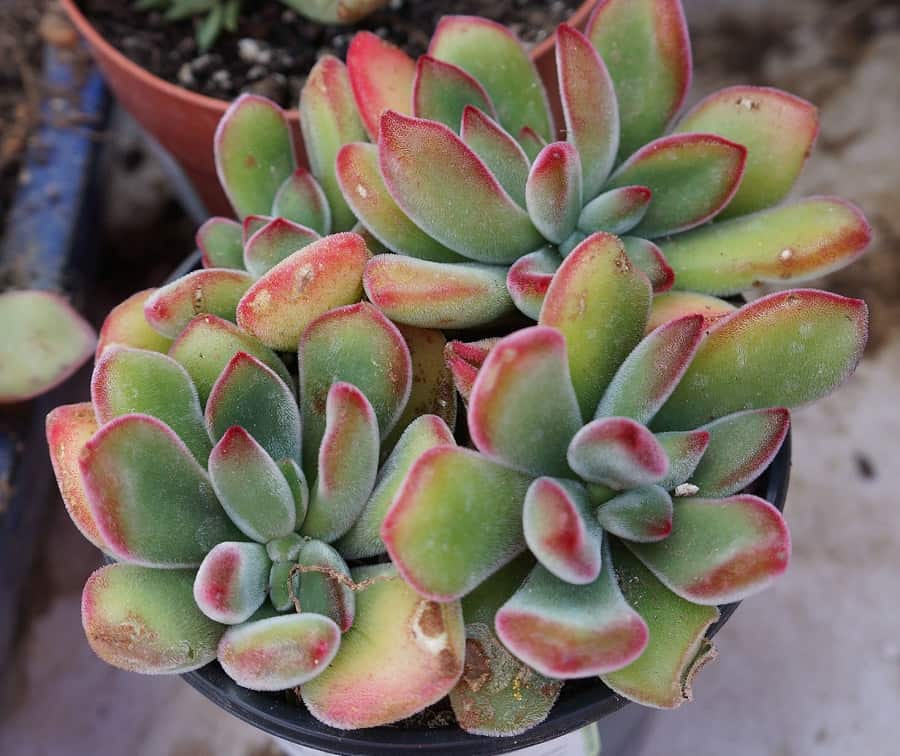Echeveria Pulvinata Ruby 101: Care and Propagation Simplified
Succulents are like little green gems, adding a pop of color and life to any space. Among these fascinating plants, the Echeveria pulvinata Ruby stands out with its striking appearance and easy-going nature. Imagine a plush, velvety cushion adorned with ruby-red tips – that’s the captivating charm of this succulent!
But the Echeveria pulvinata Ruby isn’t just a pretty face. This resilient plant is incredibly low-maintenance, making it the perfect companion for even the most forgetful plant parents. From its unique features to its effortless cultivation, this guide will equip you with all the knowledge you need to keep your plush plant flourishing for years to come.

Related Post:
160+ Amazing Echeveria Types with Pictures
Contents
Echeveria Pulvinata Ruby Care Guide
Light
The Echeveria Pulvinata Ruby thrives in plenty of bright light. It needs at least 4 to 5 hours of direct sunlight every day to truly flourish. Placing your plant outdoors during the summer months is ideal for getting that intense light exposure.
If you’re growing your Ruby indoors, a south or west-facing window is best for providing enough sunlight. However, if natural light is limited, you can supplement with a grow light. Look for a full-spectrum LED grow light and position it about 6 to 12 inches above the plant.
Without sufficient light, your Ruby will become stretched out and leggy as it reaches for the nearest light source. It’s also unlikely to bloom. If your plant is on a windowsill, rotate it occasionally to ensure all sides receive adequate sun exposure.
On the flip side, be cautious of too much intense, direct sunlight, especially in hot summer climates. Excessive sun can lead to sunburn on the delicate leaves.
Water
Like most succulents, the Echeveria Pulvinata Ruby doesn’t need much water since its fleshy leaves store moisture. Wait until the soil is completely dry before watering, then give it a good soak, ensuring excess water drains out of the pot.
If you water too much or too little, your Ruby will start to wilt, wrinkle, or drop leaves. However, it’s better to underwater than overwater, as root rot can quickly set in if the soil stays too damp. Never leave your Ruby sitting in wet soil.
When watering, pour directly onto the soil and avoid letting water sit on the rosette, as this can lead to rot and fungal diseases. During spring and summer, you’ll need to water your Ruby more frequently than in winter.
Soil

The Echeveria Pulvinata Ruby needs well-draining, porous soil to keep excess moisture away from its roots. Standard succulent potting mix, found at most nurseries and garden centers, works well for this succulent.
If growing in containers, ensure they have drainage holes at the bottom to allow water to escape. Constantly damp soil that doesn’t drain well will cause root rot.
Temperature
The Echeveria Pulvinata Ruby thrives in hot, dry conditions. It generally doesn’t tolerate cold temperatures, cold drafts, or high humidity well, as too much moisture can lead to root rot. Indoors, your Ruby will do well in average room conditions with about 40% to 50% humidity.
During spring and summer, your indoor Ruby needs temperatures between 65°F and 80°F. In winter, a few degrees cooler is ideal. Outdoors, this succulent loves warm summers of at least 66°F to 68°F.
Fertilizer
Fertilizing isn’t usually necessary for the Echeveria Pulvinata Ruby, as it’s adapted to growing in nutrient-poor soil. Too much fertilizer can actually burn the plant.
However, if you want to encourage healthy growth, you can use a diluted cactus or succulent fertilizer or low-nitrogen mix. Mix it to about 1/4 of the recommended strength. Only feed a small amount every 2 to 3 weeks during spring and summer, which is the active growing period.
Potting and Repotting

When choosing a pot for your Echeveria Pulvinata Ruby, pick one slightly larger than the root ball. This helps ensure the soil doesn’t stay too damp, which succulents dislike.
The Ruby doesn’t need frequent repotting – only when it has outgrown its current container. Before repotting, make sure the soil is completely dry. Spring is usually the best time to repot, as the plant will be entering its growth phase.
Echeveria Pulvinata Ruby Propagation
Propagating the Echeveria Pulvinata Ruby is a fun and rewarding way to expand your succulent collection. This easy-to-grow plant can be multiplied through several methods, allowing you to share its beauty with friends and family or create a stunning succulent garden of your own.
From Offsets
- Identify the offsets (baby plants) growing from the main stem of the mother plant.
- Gently twist or cut the offsets away from the stem, ensuring each has its own root system.
- Allow the offsets to callus over for a few days before planting in well-draining soil.
- Water sparingly until new growth appears, then care for as a mature plant.
From Leaf Cuttings
- Select a healthy, mature leaf and gently twist it off the stem.
- Allow the leaf to callus over for 2-3 days.
- Fill a shallow tray with well-draining soil and place the calloused leaves on top.
- Lightly mist the soil to keep it slightly moist but not soaked.
- After a few weeks, tiny plantlets will emerge from the leaf base.
- Once established, transplant the new plants into individual pots.
From Seeds (advanced)
- Collect seeds from mature Ruby Echeveria flowers.
- Sow seeds in a seed-starting tray with well-draining succulent soil.
- Cover seeds lightly with soil and mist to moisten.
- Keep soil moist but not waterlogged until seeds sprout in 2-4 weeks.
- Once seedlings have their first set of true leaves, transplant into individual pots.
With a little patience and care, you’ll soon have a thriving colony of these delightful succulents to admire and share with others!
